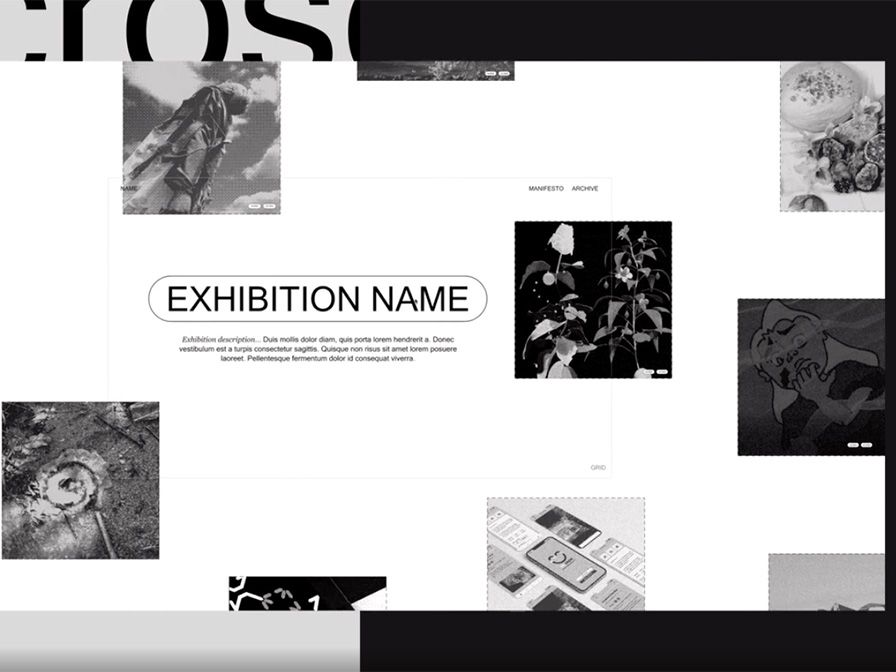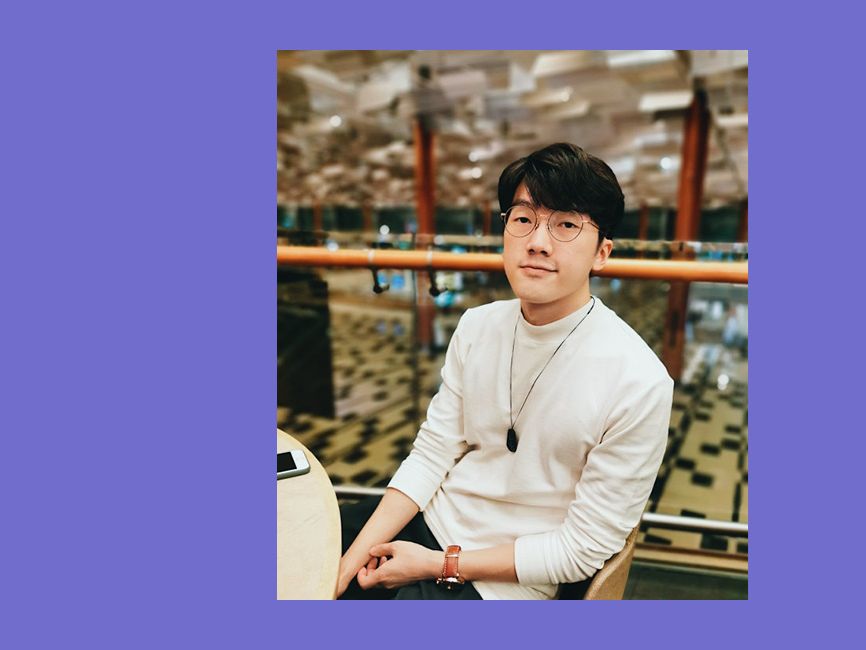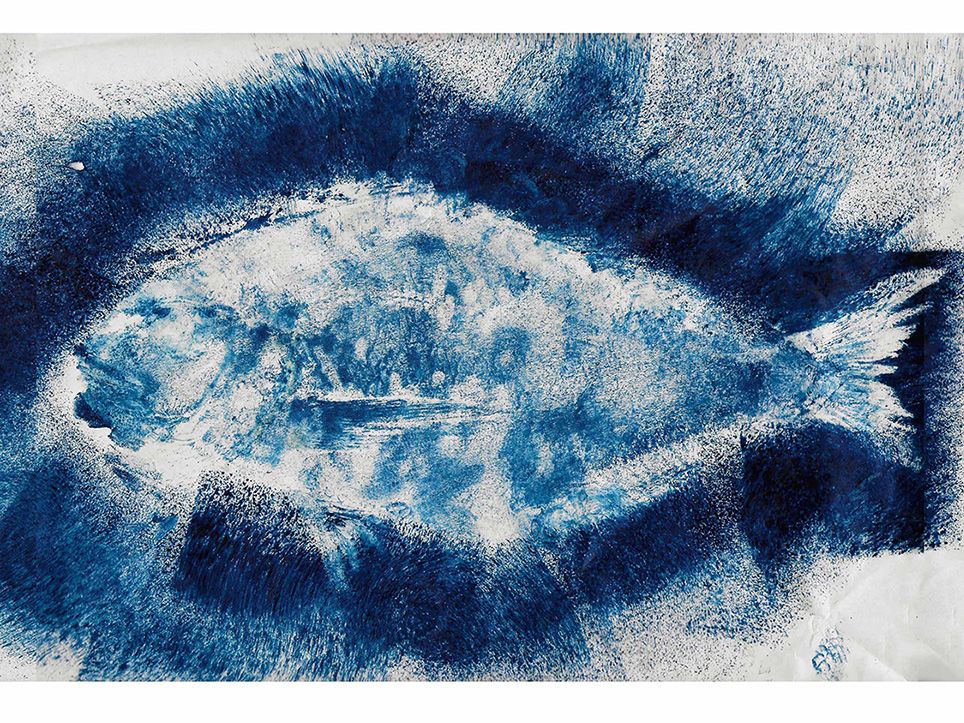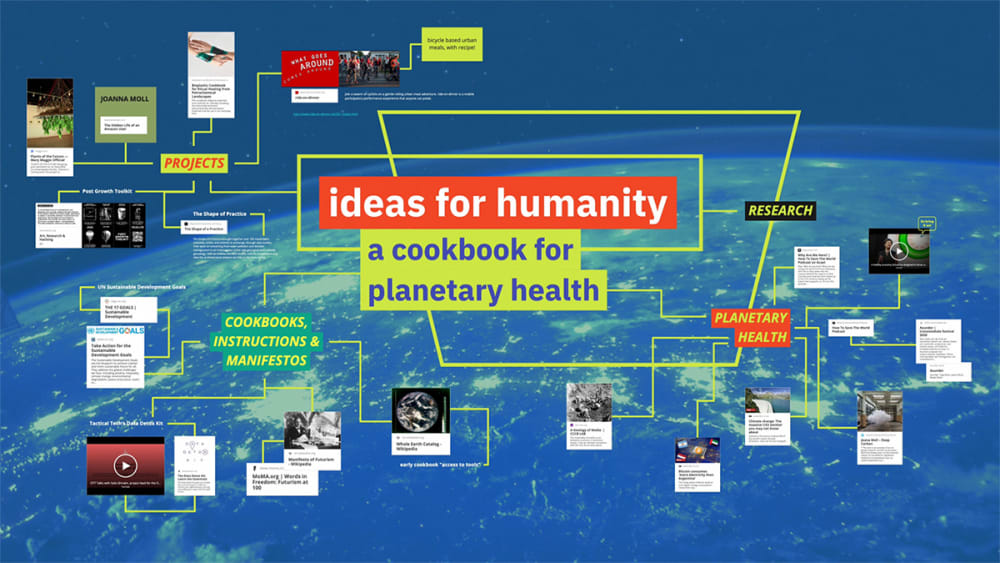
Design School students explore international collaborations with Global Design Studio
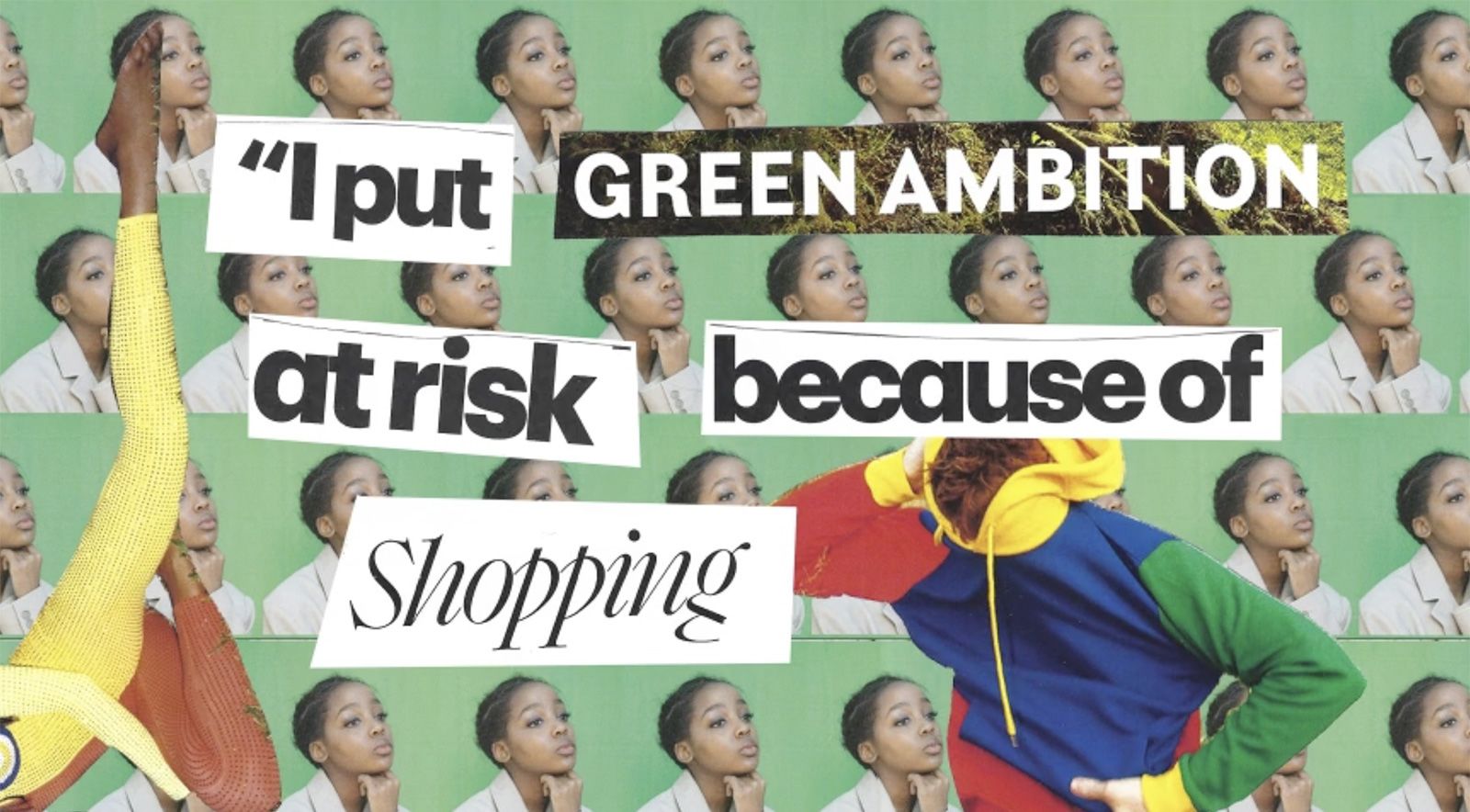
- Written byChloe Murphy
- Published date 23 February 2022

With a focus on how creativity can radically transform our world, the Design School at London College of Communication (LCC) explores the power of design practice, thinking and research to drive strategic change, shape positive futures and provide cultural value.
Bringing together unique ideas, skills and approaches, students and staff work together to consider significant contemporary issues, developing solutions for major global challenges across areas ranging from social innovation to sustainability.
In 2021, undergraduate students from our BA (Hons) User Experience Design and BA (Hons) Interaction Design Arts courses were invited to consider how both individual and collective action can make the world a better place through an opportunity with Global Design Studio (GDS), an intensive online project that facilitates international university collaborations through projects with real-world relevance and impact.
Working with fellow students and staff from RMIT University (Melbourne, Australia) and ELISAVA (Barcelona, Spain), participants were asked to look beyond simple survival strategies to generate innovative solutions for a range of pressing ecological challenges. Groups were tasked with responding to a brief entitled Ideas for Humanity - A Cookbook for Planetary Health, developing their own ‘recipes’ that could utilise the power of knowledge sharing and design-as-action.
With responses ranging from field guides, tutorials, tips and life-hacks to manifestos, stories and training programmes, their final ideas were then presented digitally at Melbourne Design Week before being showcased across a physical exhibition at Barcelona Design Week in the autumn.
We chatted to BA (Hons) User Experience Design students Kimberly Tan and Veva Lopes about developing a creative practice that combines design with human behaviour, their experience of developing ecologically-conscious solutions for a better world, and highlights from their time at LCC so far.

Tell us about your practice: have you always been interested in user experience (UX) design, or is this an area you've moved towards over time?
Kimberly: I’d say that my interest in UX design was a gradual one - I was a self-taught designer prior to coming to LCC, so my understanding of the creative field was very limited.
In retrospect, my preconception of the discipline was quite skewed. I thought that UX design was an exclusively solutions-based discipline, and that I would come out of my degree highly specialised in redesigning commercial apps and websites, which I was glad to commit to 2 years ago. However, I now feel like I’ve been introduced to the true breadth of what UX design has to offer, and the wide spectrum of possibilities and opportunities that go far beyond the simple redesign of an interface.
Veva: I actually got into UX design around 2019. When I was applying to university, I originally decided to study graphic design, but had an offer from the BA (Hons) User Experience Design course team as they believed I was better suited to their subject - and, to this day, I totally agree.
My interest has really grown as I’ve navigated and executed our course projects, especially in terms of researching and prototyping.
Why did you apply to BA (Hons) User Experience Design at LCC?
Kimberly: Coming from a non-traditional design background, I felt like I’d missed out on learning the key fundamentals of visual design and communication, so having the time and space to experiment and solidify these skills in Year 1 was appealing to me.
Beyond that, I definitely wanted to feel challenged, and to work with a wide spectrum of materials and emerging technologies. I’m also deeply interested in human behaviour and psychology, as well as questioning systems and issues around me.
BA UX Design has a specific focus on critical analysis and rigorous research practices, so I felt like this was a course that perfectly married my 2 major interests.
Veva: Once I’d been approached by the course team, I researched the UX course at LCC and decided it was the best course for me.
Tag, You're It | Recipes for Action
Where did you first find out about the Ideas for Humanity opportunity, and why did you decide to take part?
Kimberly: I first found out about the opportunity when our tutors promoted Global Design Studio (GDS) to us in Year 1. However, I eventually took part in Year 2 as it was integrated into our main curriculum through one of our studio units.
GDS ended up being incredibly helpful for my subsequent brief as there were overlaps in the topics discussed, while guest lectures from artists and conversations with both my group mates and tutors helped to shape my next project in the studio.
Veva: I’d been part of this project during Year 1 and really enjoyed it, so I was interested in doing it again - especially as the 2021 brief involved working with ELISAVA (which, funnily enough, was one of the other universities I’d originally applied to!)
What did the project involve, and what did you aim to achieve?
Kimberly: GDS was a 2-week remote design sprint where I worked with 3 other students to respond to the brief, which involved conceptualising a proposed set of actions to encourage greater awareness and care for the spaces and environment we inhibit. Each group then produced a video and manifesto to be presented to a wider audience.
My group developed Tag, You’re It - a radical global movement addressing consumer culture, and the ugly truths of the fashion industry which have led to unprecedented rates of environmental destruction.
Our project calls on consumers to initiate a monumental shift through two key approaches: first, by educating ourselves and making more informed purchases. Then, creating a groundswell of pressure by going into retail stores and attaching tags with personally curated messages that speak directly to fashion giants – calling on them to take greater accountability for their actions, and to pioneer the movement towards a more sustainable textile industry.
Veva: My group aimed to alert people about spam emails through our project, Healthy Mail, while our overall goal was to shed light on some measures we could take to help the environment.
Healthy Mail | Recipes for Action
Take us through your creative process: what inspired your initial ideas, and how did you develop them?
Kimberly: My group met daily during the 2-hour GDS workshops which provided quite a structured timeline for us to follow. This was incredibly helpful given the short turnaround time and the limitations of working remotely across 3 different time zones.
The basis of our project was rooted in an interesting research paper shared by one of my group members on the relationships between materials and emotions in industrial products. We decided to focus on textiles, and did a ton of research about the various environmental, financial and social impacts surrounding textile production.
We then took part in a ‘Crazy 8s’ exercise, where we each sketched out 8 possible design solutions in 8 minutes and had a discussion based on our initial ideas. This was a pivotal moment in our project: it forced us out of the research rabbit hole and into the ideating phase.
We then came to a consensus on our favourite idea, and developed it further alongside conversations with our tutors.
Veva: My group was inspired by the amount of emails each of us received in our inboxes every day. We did some research and realised that having too many emails can be really damaging to the environment (not to mention our mental health).
From there, we worked on ways to help people prevent these issues, and explored how we could turn those ideas into a final piece that fitted the subject. In the end, we decided to develop a restaurant menu format and video.
What were your highlights of the project?
Kimberly: Collaborating with students from other universities in other countries – all of whom were studying different, yet related disciplines - was a great experience. Everyone in the team brought such different skillsets and areas of expertise, but it felt so easy to collaborate and ideate on relevant and interesting topics because we were united by the want to create something meaningful together.
Seeing our project exhibited as part of the online Melbourne Design Week - and subsequently having a physical exhibition launch at the Roca Gallery as part of the Barcelona Design Week - was extra special as it was exciting to know that our work was going to be seen by actual people beyond just those in the academic context.
Veva: My major highlight was definitely getting to work with students from IDA, RMIT and ELISAVA.
I found it really interesting and rewarding to be able to work with people from different areas and practices, and to explore possibilities and ideas outside of my normal comfort zone.

What have you most enjoyed about your time as a student at LCC so far?
Kimberly: I’ve really enjoyed how widely experimentation is encouraged across the College: a common thread that runs through from everyone from our tutors to our technicians. There’s a big emphasis on not needing to walk into a workshop with a perfectly formulated idea of what you want to make or how you want to make it, which removes the pressure of feeling like you have to know exactly what you’re doing!
This culture has been incredibly liberating, as I feel like there’s often such a big anxiety around asking the wrong questions which can be so counter-productive to learning. It’s definitely been helpful in encouraging me to explore more experimental skills and technologies I wouldn’t otherwise have had the courage to express interest in.
Veva: Coming from Lisbon, I was used to a different education system and environment. Maybe it was because each part of my university experience has been new, but I’ve just really enjoyed everything.
I think my main highlight has been my time as a course rep. It’s such an interesting role - you actually get to talk and discuss ideas with your course team using your peers’ feedback before actually seeing changes happening as a result. I don’t think this happens as much back home.
Being Captain and President of the UAL Volleyball Team has been another highlight. The team feels like family to me, and allows me to meet so many wonderful people who share the same love for volleyball that I do.
Who would you recommend your course to?
Kimberly: BA (Hons) User Experience Design covers such a wide spectrum of skills, so I think the course would be a great fit for anyone who's interested about the broader scope of digital design and emerging technologies, anyone who’s curious about the world around them, and anyone who’s interested in unpacking complex systems through the critical lens of design.
Veva: Well, firstly, I’d absolutely recommend the course to students who are interested in UX, and also to anyone who wants to take their skills to a different level, especially if you’re interested in areas such as graphic design. UX can help you see your creations come to life while learning new and interesting things like coding, which I knew zero about until I started studying at LCC!
Related links:
- Find out more about the Global Design Studio.
- Learn more about our BA (Hons) User Experience Design and BA (Hons) Interaction Design Arts courses.
- Explore the work of our Design School.
- Experience life at LCC through our interactive Virtual Open Day.
